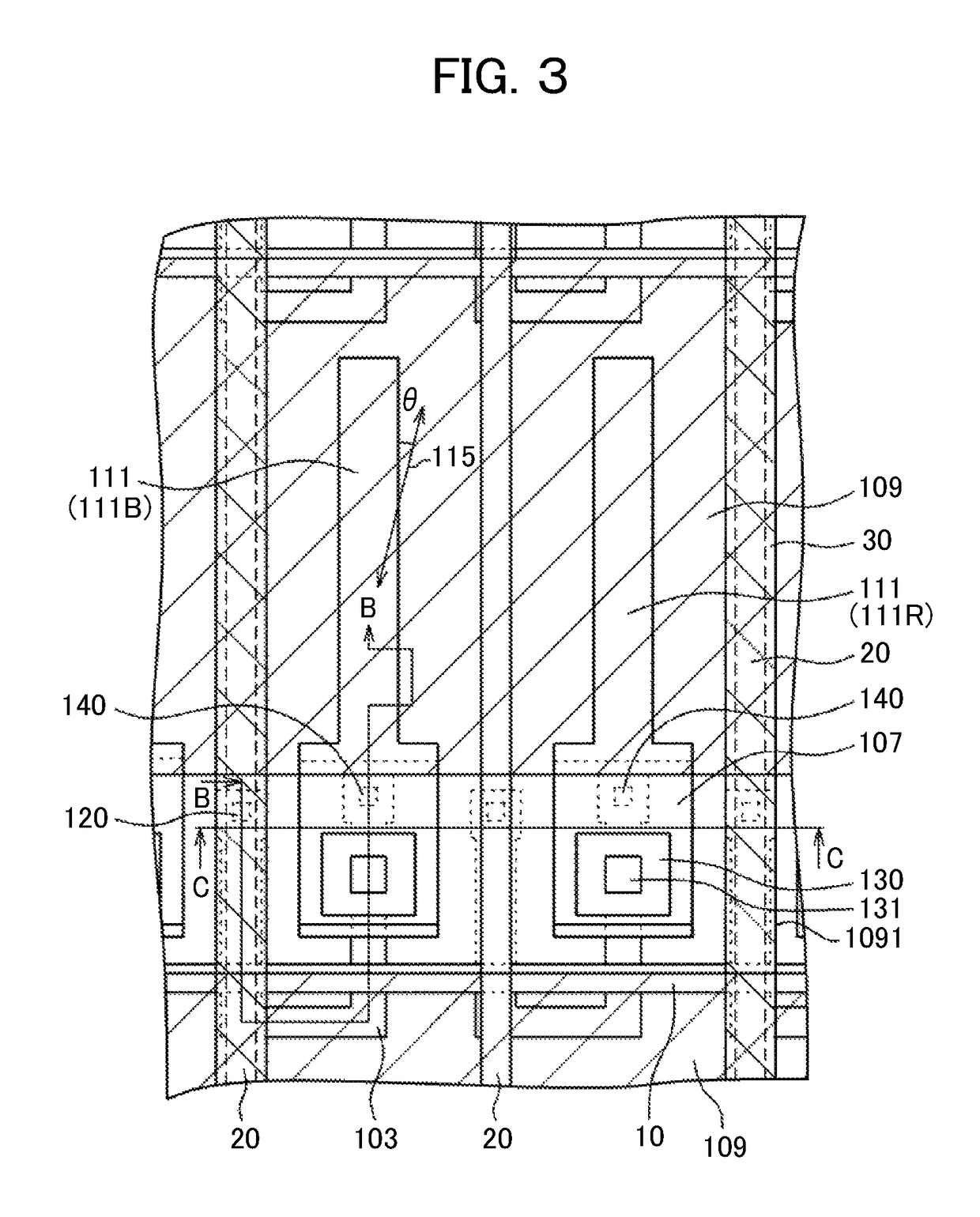Liquid crystal display device that avoids influence on image quality due to residual ions
a liquid crystal display and residual ions technology, applied in semiconductor devices, optics, instruments, etc., can solve the problems of deterioration of images, disappearance of persistence, and display device failure to display correct images, so as to prevent image persistence and high-quality image display
- Summary
- Abstract
- Description
- Claims
- Application Information
AI Technical Summary
Benefits of technology
Problems solved by technology
Method used
Image
Examples
first embodiment
[0034]FIG. 1 is an example of a liquid crystal display device used e.g. in a cellar phone. FIG. 2 is a cross-sectional view along the line A-A of FIG. 1. In FIGS. 1 and 2, the TFT substrate 100 and the counter substrate 200 adhere to each other by the seal material 4; the liquid crystal 300 is sandwiched between the TFT substrate 100 and the counter substrate 200. The lower polarizing plate 501 is adhered to underneath the TFT substrate 100; the upper polarizing plate 502 is adhered to on the counter substrate 200. Since the liquid crystal is not self-illuminant, a back light is set on the back of the liquid crystal display panel.
[0035]The display area 2 is formed where the TFT substrate 100 and the counter substrate 200 overlap each other in a plan view; the area around the display area is the peripheral area 3. The seal material 4 is formed at the peripheral area to adhere the TFT substrate 100 and the counter substrate 200. The TFT substrate 100 is formed bigger than the counter ...
second embodiment
[0097]FIG. 17 is a plan view of the second embodiment. In FIG. 17, the scanning line 10 extends in lateral direction and the video signal lines 20 extend in longitudinal direction crossing the scanning line 10. The video signal lines are covered by the shield wirings. The insulating layer like the organic passivation layer is formed between the video signal lines and the shield wirings as explained in the first embodiment.
[0098]In FIG. 17, the shield wirings are formed by the first ITO 40, the second ITO 50 or the common metal wiring 30, etc. according to the positions. The shield wiring can be a laminated film as explained by FIGS. 12-16.
[0099]The pixel including the pixel electrode 111 is formed between the video signal line 20 and the adjacent video signal line 20. The first area of the pixel electrode 111 has two comb teeth with a slit between the comb teeth. The pixel electrode in FIG. 17 is an example; in other cases, the comb teeth can be one or three or more.
[0100]In FIGS. 1...
PUM
| Property | Measurement | Unit |
|---|---|---|
| distance | aaaaa | aaaaa |
| distance | aaaaa | aaaaa |
| distance | aaaaa | aaaaa |
Abstract
Description
Claims
Application Information
 Login to View More
Login to View More - R&D
- Intellectual Property
- Life Sciences
- Materials
- Tech Scout
- Unparalleled Data Quality
- Higher Quality Content
- 60% Fewer Hallucinations
Browse by: Latest US Patents, China's latest patents, Technical Efficacy Thesaurus, Application Domain, Technology Topic, Popular Technical Reports.
© 2025 PatSnap. All rights reserved.Legal|Privacy policy|Modern Slavery Act Transparency Statement|Sitemap|About US| Contact US: help@patsnap.com



